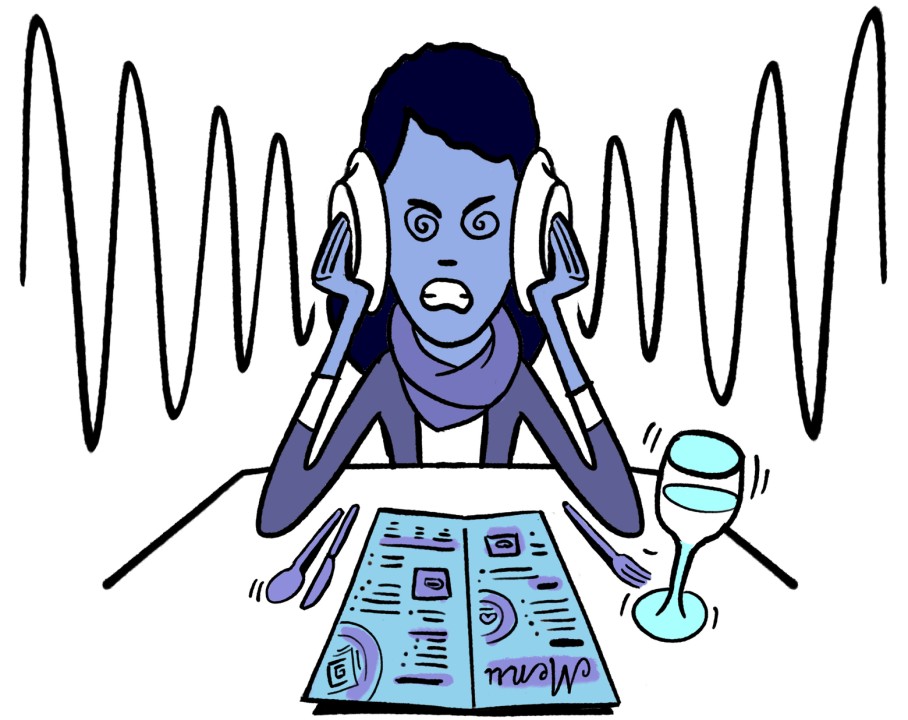February 2024
A recent study by scientists at Duke University looked into how misophonia, a strong reaction to certain sounds, is different from general difficulties in managing emotions.

They used special scans to see how emotions and their regulation vary between the two groups of misophonia patients and individuals who have trouble regulate their emotions. They set up a study where individuals tried both cognitive restructuring and neurostimulation via rTMS to see which one helped more in lessening their distress. They measure the symptoms through both self-report and physiological responses, such as skin conductance response (SCR) and heart rate (HR).
Cognitive restructuring is a way to change the negative thoughts or beliefs that we might have. It is like rearranging how we think about certain things to make them feel less upsetting or distressing. So, it is a technique to help us shift our perspective and feel better about situations that might be bothering us.
Neurostimulation is a method that involves using a gentle electrical or magnetic stimulation to influence the activity of the brain. It is like giving a small, controlled energy boost to specific areas of the brain. In this study, researchers assessed if neurostimulation can be used to help people with misophonia, by trying to improve the brain response to those triggers.
Comparing Misophonia to Emotional Dysregulation
The study compared adults with moderate to severe misophonia with a group experiencing clinically high difficulties in emotion regulation. Surprisingly, physiological responses such as heart rate to trigger sounds were similar between the two groups, suggesting existing interventions including cognitive restructuring and neurostimulation for emotion regulation might benefit misophonia sufferers.
Sensitization and Subjective Distress
Participants with misophonia exhibited heightened distress when confronted with trigger sounds, indicating a sensitization effect. Interestingly, self-reported distress differed from physiological responses, suggesting that perceived distress might be a unique aspect of misophonia, distinguishing it from other clinical conditions.
Top-Down vs. Bottom-Up Approaches
Functional imaging revealed brain regions that were involved in misophonic reactions. The study explored interventions targeting top-down processes (cognitive reconstructing) and bottom-up processes (neurostimulation). Both approaches were effective. The top-down approach, or cognitive reconstructing, which engages the “regulation networks,” proved superior in reducing distress triggered by misophonic sounds, as reflected in self-report. The regulation network is responsible for regulating emotions. Meanwhile, neurostimulation was more effective in reducing physiological arousal (e.g., increased heart rate when hearing a misophonic trigger). The combination of both approaches appeared to be the most successful.
Top-down interventions involve using your thoughts and conscious mind to bring about change or cope with a situation, like calming yourself down through positive thinking when stressed. On the other hand, bottom-up interventions focus on addressing issues at a more basic or sensory level, often bypassing conscious thought. For example, engaging in deep breathing exercises or physical activity to directly impact your body’s response to stress. In simpler terms, top-down is like changing things from the top or control centre of your mind, while bottom-up is about addressing things at a more foundational, sensory level to influence how you feel.
Neurostimulation as an Intervention
Neurostimulation, a technique with potential applications in various disorders, was tested in isolation and in combination with emotion regulation. The findings suggested that neurostimulation alone or in conjunction with behavioural skills significantly reduced distress associated with misophonia triggers.

The image was adopted from J.J.T Vink master thesis (https://essay.utwente.nl/72337/1/Vink_MA_TNW.pdf)
Implications for Misophonia Interventions
The study highlighted the promise of combining neurostimulation and cognitive restructuring for misophonia intervention. However, it emphasized the need for further research to understand the long-term effects and optimize the application of these interventions.
Limitations and Future Directions
The study acknowledged limitations, including a small and non-diverse sample. Replication with larger and more diverse groups is essential. The study also suggested exploring alternative neurostimulation techniques and conducting placebo-controlled trials for a more comprehensive understanding of misophonia interventions.
Conclusion
In summary, emerging research sheds light on misophonia as a disorder comparable to emotional dysregulation disorders. While physiological responses to trigger sounds are similar in the experimental groups (misophonia and emotion dysregulation), self-reported distress distinguishes misophonia. The study suggests that cognitive restructuring (a method which is used in CBT) is superior to neurostimulation for management of misophonia when the outcome is assessed via self-report questionnaires. However, a combined approach of neurostimulation and cognitive restructuring improved the physiological responses as well as self-report questionnaires. However, further research is needed to validate these findings and explore the long-term effects of interventions.
What to do if you have misophonia?
Misophonia is a real and highly debilitating disorder that can have a significant impact on individuals’ lives, and it can be challenging to manage without support. If you or someone you know is struggling with misophonia, it is essential to seek help from healthcare professionals who understand the disorder and can provide effective treatment options.
This review is written by Dr. Mercede Erfanian, PhD, who is a research fellow at Hashir International Specialist Clinics and Research Institute for Misophonia, Tinnitus & Hyperacusis.
